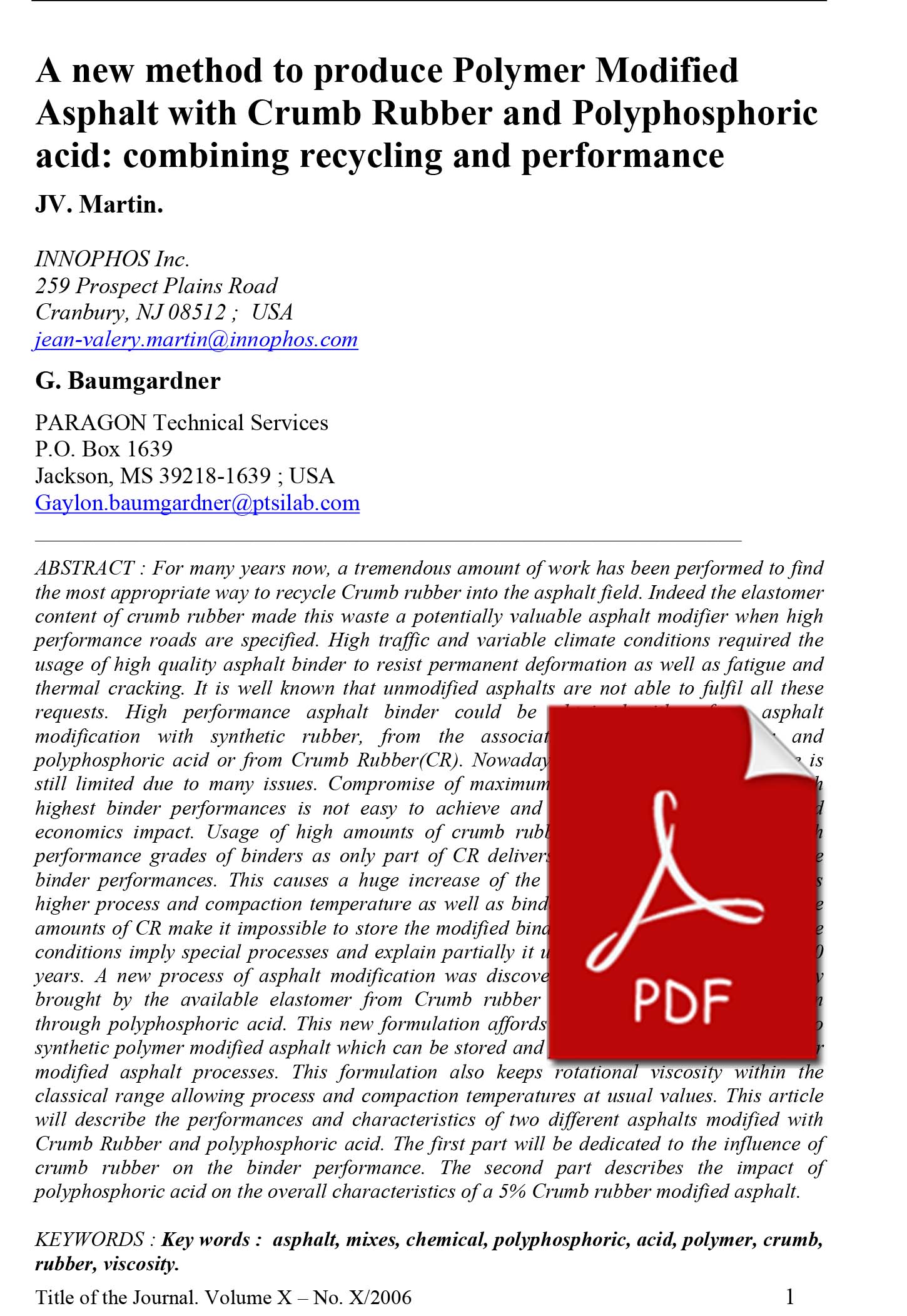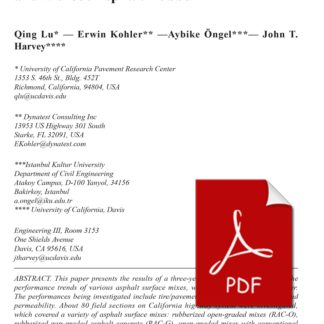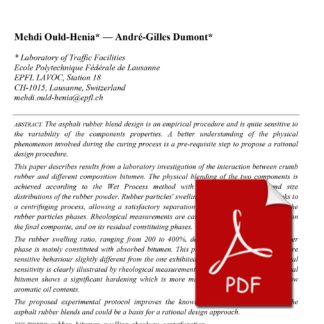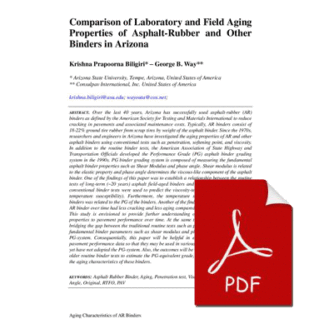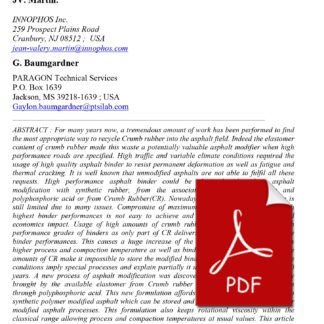Description
For many years now, a tremendous amount of work has been performed to find the most appropriate way to recycle Crumb rubber into the asphalt field. Indeed the elastomer content of crumb rubber made this waste a potentially valuable asphalt modifier when high performance roads are specified. High traffic and variable climate conditions required the usage of high quality asphalt binder to resist permanent deformation as well as fatigue and
thermal cracking. It is well known that unmodified asphalts are not able to fulfil all these requests. High performance asphalt binder could be obtained either from asphalt modification with synthetic rubber, from the association of synthetic rubber and polyphosphoric acid or from Crumb Rubber(CR). Nowadays CR modified asphalt usage is still limited due to many issues. Compromise of maximum quantity of CR recycling with
highest binder performances is not easy to achieve and implies important process and economics impact. Usage of high amounts of crumb rubber is needed to obtained high performance grades of binders as only part of CR delivers the elastomer which gives the binder performances. This causes a huge increase of the binder viscosity which requires higher process and compaction temperature as well as binder rate of the asphalt mix. large
amounts of CR make it impossible to store the modified binder in classical timeframe. These conditions imply special processes and explain partially it usage limitation over the past 20 years. A new process of asphalt modification was discovered by combining the elasticity brought by the available elastomer from Crumb rubber and the chemical modification through polyphosphoric acid. This new formulation affords binder performances similar to synthetic polymer modified asphalt which can be stored and prepared with standard polymer
modified asphalt processes. This formulation also keeps rotational viscosity within the classical range allowing process and compaction temperatures at usual values. This article will describe the performances and characteristics of two different asphalts modified with Crumb Rubber and polyphosphoric acid. The first part will be dedicated to the influence of crumb rubber on the binder performance. The second part describes the impact of
polyphosphoric acid on the overall characteristics of a 5% Crumb rubber modified asphalt.

